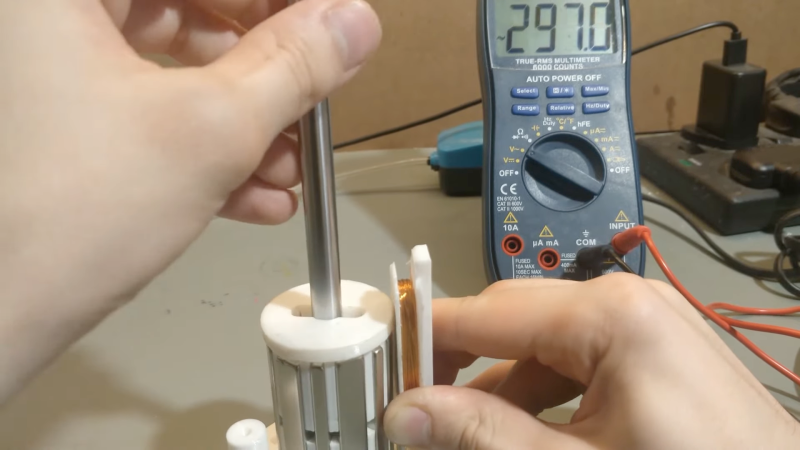While renewable energy offers many opportunities for decentralizing energy production, it can sometimes feel that doing so on a truly local level remains unachievable with increasingly large utility-scale deployments re-centralizing the technology. [AdamEnt] hopes to help others seize the means of energy production with the development of the ModuCoil.
This modular coil is intended to be used in motor and generator applications, and features a 3D printed structure to wind your copper about as well as a series of ferromagnetic machine screws and nuts meant to boost the field strength. This project really emphasizes the rapid part of rapid prototyping with this version 2 of the coil following only a week after the first.
[AdamEnt] only reached a peak of ~600 mV in the short test of a single coil, but is optimistic the current design could hit 1V/coil given a fully wound coil actually affixed to something instead of just held in his hand. It’s definitely early stages, but we think this could be the start of an interesting ecosystem of motor and generator designs.
If you want to learn more about how those big wind turbines work, look here, or you could check out a 3D printed brushless motor, or where all that copper comes from anyway.















Nice!
“a series of ferromagnetic machine screws and nuts meant to boost the field strength” – One more screw to bring it to six, and it could be a guitar pickup as well, with a magnet in there somewhere.
I have also spent a few weeks trying to design a generator using 3d printing techniques. The result was no designed motor or generator but the knowledge that you have to design the magnetics of the motor as well. If you want good performance then you need to close the magnetic loops with an iron core. And the airgap between the iron cores has to be the minimal possible. This is because you want to increase the generated voltage and to increase the voltage you have to increase the magnetic flux (and as a result the change speed of the magnetic flux). There is a multiplier in the range of thousands between the flux conductivity of air and iron. Air core motors/generators have a huge disadvantage.